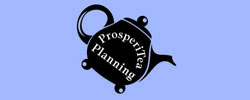A client asked me if I had any financial literacy suggestions for teenagers. It kicked off a reading festival! Here are my notes.
Years ago I read Suze Orman’s Young Fabulous and Broke and I was underwhelmed. She seems to think that everyone is as clueless as she was and needs to have a come-to-Jesus moment and she’ll tell you how. Most people I know just want to know some facts and they’ll integrate them into their lives as they deem appropriate. I generally give Suze Orman’s work a pass.
The Motley Fool’s Investment Guide for Teens is oddly targeted. It’s for teens, according to the title, but it’s really more appropriate for someone in their middle twenties who wants to know how to get started investing. It’s mildly dated, but worth picking up, especially used, if you’re trying to break the code of things like 401(k) and Roth IRA and mutual funds and expense ratios, etc etc etc.
I really disliked Chad Foster’s “financial literacy for teens.” It reads like a pedantic uncle who seized a microphone and insists on telling stories to kids about stuff that mattered to him, without regards to what will matter to the kids. It’s full of stories meant to strike fear in the kids so they won’t do what he did, but doesn’t have a single word about how to pay for college. Skip it and get the next one instead.
I picked up “5 Mistakes You Can’t Afford to Make in College” and it’s close to perfect. It’s formatted like a graphic novel, and it’s small enough in scope that it gets a few key issues across.
Unfortunately, it has two problems that keep me from recommending it whole-heartedly as is. Their first “mistake” shows a near-religious tilt towards the Dave Ramsey’s controversial stance on paying for college without acknowledging that there are varying opinions. Specifically, it tells you to never borrow money for college. That’s such a bad blanket statement! It’s okay to borrow for college, it’s NOT okay to borrow TOO MUCH for college, or to borrow for a career you won’t use, or to borrow to go back later in your life. But borrowing up to 1x a year’s expected salary is generally a reasonable thing to do for someone under 25, and the Federal student loans have built-in limitations and protections that are appropriate safeguards for most people. I’m almost always fine with a young person taking out the amount of Direct Federal Student Loans they’re eligible for. They have low rates, reasonable repayment terms, and the potential for loan forgiveness in limited situations. In my opinion it’d be relatively safe to say “never take out PRIVATE student loans”, but even then we’d have to look at the individual situation.
The second “mistake” they ask you not to make is to stay out of credit card debt. That was good advice. The third was to avoid dumb choices. Oddly, it made no mention about choices involving procreation. Want to be poor? Have a baby out of wedlock before you complete your education. How did this piece of information get left out? Someone needs to say it and it belongs here, in my opinion. Mistake number four was about not having a plan, which basically means not knowing a thing about “telling your money where to go”. It’s a backwards way to put it, but this had a nice intro to budgeting that was good enough.The fifth mistake is not having any savings. It was a light-weight treatment of that, but appropriate for the age.
All in all, I want to put two sticky notes in this with corrections: “take out Federal student loans only” and “don’t procreate until you’re educated” and then give it to everybody entering college.
If you want something deeper than a short graphic novel, I’m really liking Erin Lowry’s “Broke Millennial”. She’s put together a comprehensive book answering nearly all the questions a twenty-something might have about money in short chapters that are up-to-date, correct, and well-written. I found it very easy to navigate around, and was impressed both at her command of the technical issues (she was studying for the Certified Financial Planner designation as she wrote this, I think) as well as her command of the needs of the young adults she’s talking to. It comes out of a blog she wrote, which sort of explains the many short chapters. I’ll be giving this book to my 26 year old MBA-student daughter when I’m done reading it.
If you aren’t into books at all, I’ve really enjoyed the podcast “Bad with Money” by YouTube star Gaby Dunn. She’s a polyamorous bisexual bicoastal artist and her reality doesn’t fit the world most people I know live in, but she’s really entertaining as she figures out the stuff her friends already know. She interviews people in each show. Some are really high status, like Cecile Richards and Jean Chatsky. Many are just her friends or their parents. Somewhere around episode 10 she talked with someone about the benefits of being a sex worker. It made me uncomfortable as a baby boomer mother of twenty-something kids, but as a feminist businesswoman I had to give her credit for being real about it. By Season 2 she’d learned enough about money, and how it worked, to get outraged and go down the Occupy Wall Street path. I loved watching her understanding of issues get more nuanced as she went along. I don’t know if you’ll learn much in the way of budgeting this way, but you’ll totally start to feel comfortable talking about money from every single possible point of view.
